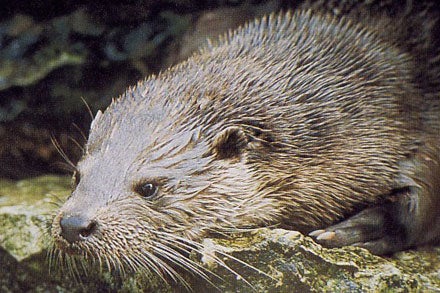| MARK WINTLE |
| Mark Wintle, an angler for thirty-five years, is on a quest to discover and bring to you the magic of fishing. Previously heavily involved with match fishing he now fishes for the sheer fun of it. With an open and enquiring mind, each week Mark will bring to you articles on fishing different rivers, different methods and what makes rivers, and occasionally stillwaters, tick. Add to this a mixed bag of articles on catching big fish, tackle design, angling politics and a few surprises. Are you stuck in a rut fishing the same swim every week? Do you dare to try something different and see a whole new world of angling open up? Yes? Then read Mark Wintle’s regular weekly column. |
PART ONE – OTTER POPULATIONS AND THE REHABILITATION OF INJURED OTTERS
There has been much in the angling press over the last year or two about otters, and their impact on our lake (carp) and river (barbel) fisheries. My local Dorset Stour never actually lost all of its otters during the days of serious decline in the sixties and seventies but they were certainly very rare. It is only in the last three years that I have actually made three sightings on the Stour, two at dusk and one in the day. I seized the chance to learn much more about otters when the Dorset Otter Group arranged an open day. Here, I could speak to the experts, and perhaps get nearer some answers to questions like: – How many otters are there now? What is the RSPCA’s role in reintroducing otters? What do otters eat? In this first article I shall describe how the otter population is re-establishing itself, how the population is estimated, and the perils it faces. I shall also describe the RSPCA’s role in rehabilitating otters. Next week, in Part Two, I shall report on the findings of a study that is investigating what otters are eating in the Dorset Stour, and discuss how otter predation affects anglers and fisheries including preventative work. There was a diverse range of speakers during the day, including Professor Paul Chanin (mammal ecologist), Adam Grogan (Wildlife rehabilitation officer for the RSPCA), Clair Rogers (Bournemouth University, studying what otters eat in the Stour), Bronwen Bruce (Dorset Wildlife Trust, who hosted the event), and Peter Irvine (Dorset Otter Group or DOG for short). Wildlife film director Hugh Miles also turned up. When asked why he was there, he said it was to find out how to kill the two otters eating all the carp in his pond that was connected to the Stour by a brook. Hugh was joking though there was an awkward silence for a couple of seconds! How did the otter become so rare – Causes of the decline Using DNA to establish numbers of Otters As you might expect where there have been very few released initially, eg, just three on the Itchen, this results in inbreeding and genetic defects. But as otter numbers expand in neighbouring catchments, then you start to get a crossover. In time, you get a better mixed population as those that are inbred and weaker are squeezed out by natural selection/survival of the fittest. Limiting factors on populations The RSPCA and the rehabilitation of otters With cubs, the scenario is different in that the cubs may be orphaned. But before attempting to ‘rescue’ a cub the RSPCA has to be sure that it is genuinely orphaned, and usual practice is to leave it overnight if possible unless it is very distressed or in immediate danger. The RSPCA keep the cubs for up to twelve months, at one centre in the company of other otters, to allow them to grow to full size. As the otter population has re-established itself, the RSPCA can no longer re-introduce the cubs into uninhabited (from an otter’s point of view) territory. Generally, the cubs are re-introduced into the catchment areas from where they were rescued. They have to take their chance with those already occupying the territory. To find out what happens to them after release, the RSPCA micro chip each cub so that if they turn up dead they can be identified at post mortems. It is important to remember that life in the wild is extremely tough, and the RSPCA have found that only a few of those rehabilitated are still around one year later. Furthermore, the numbers being rescued each year are not that big, around 10 to 20 per year. In this first article, I have gleaned much from two much longer and detailed articles by those mentioned, as well as the detail given in their respective talks. In next week’s article, I’m going to tell you much more about what they eat, the potential impact on angling, and how fisheries can protect against them. Next week: ‘The Otter – Part Two’ |











